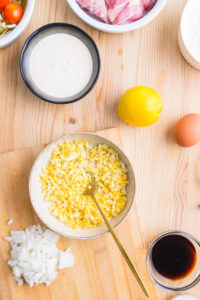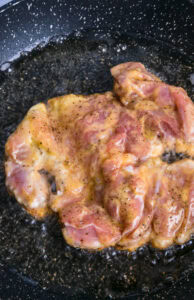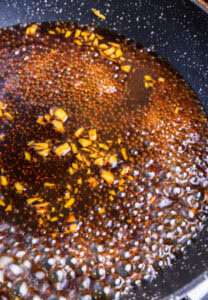A delicious Japanese fried chicken “Nanban” recipe quite unique in its kind
Fried chicken is the kind of recipe you never get tired of. Once you’ve tasted Karaage chicken, it’s actually quite difficult to resist Nanban.
Karaage being originally a typical Japanese cooking technique consisting of frying meat — most often chicken — in oil, this recipe makes you (re)discover tender and crispy chicken, with an extra Nanban sauce and rich tartar sauce that you won’t soon forget!
What is Chicken Nanban?
We know there are tons of fried chicken recipes. I just mentioned Karaage chicken, but in other world cuisines, there’s also Chinese fried chicken, its Cantonese version or Korean version.
We also think of Soo Guy chicken or Katsu chicken. All this ultimately proves that we’re crazy about fried chicken. And what we love is its juicy and tender inside, which still remains very crispy on the outside.

But then, what makes Chicken Nanban (チキン南蛮) so different from the others? It’s all in the breading. Generally, it’s said that Karaage is crispier on the outside than Nanban. I’d even say that the latter is softer and more flexible.
The secret is therefore the flour-egg mixture covering the chicken. It makes it less dry than other fried chicken recipes with classic breadcrumbs. The crust of the meat is then very light, the chicken flesh is well infused with salt and pepper… it’s simply delicious. And I haven’t even mentioned the “tartar” sauce that accompanies it all.
Another notable difference is that the preparation steps are not the same either, and if we compare Nanban with Karaage once again, we’ll notice that the steps are reversed.
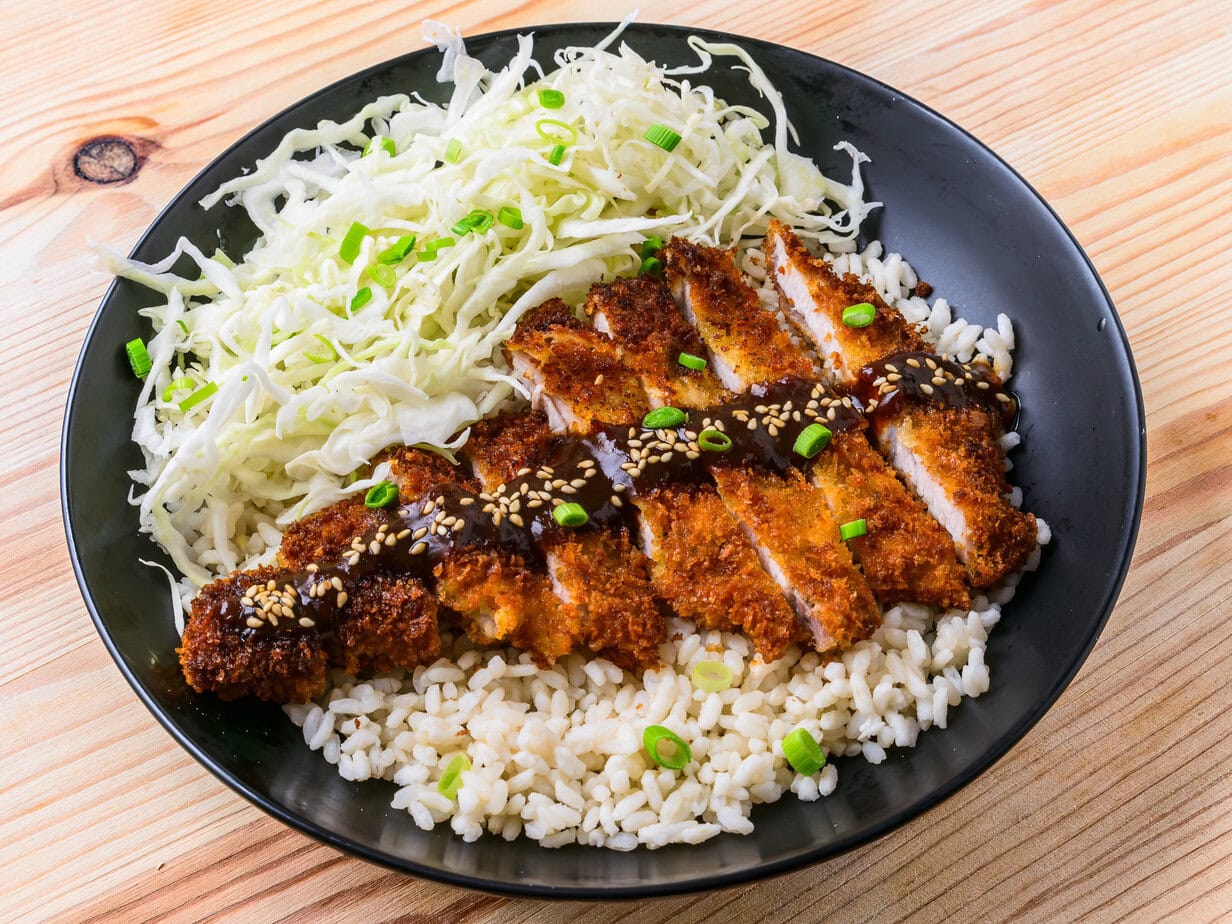
Where Karaage first marinates in a soy sauce-sake mixture and is then fried, Nanban is first fried, then only coated with Nanban sauce and dipped in tartar sauce.
Surprising, I agree. It’s not for nothing that in Japan, the term “Nanban”, even if it hasn’t always had the meaning it has today, primarily refers to something foreign but still very pleasant and which, in this case, clearly makes your mouth water. To such an extent that in Japan, it’s typically the kind of recipe you put in bento boxes. Not so bad after all, this Chicken Nanban!
Where does Chicken Nanban come from?
Chicken Nanban is a specialty straight from Miyazaki, on the island of Kyushu. This prefecture is spoken of as the true seat of Nanban, and it’s where it’s cooked best according to a good number of internet users.
As I mentioned, at the very beginning, “Nanban” didn’t evoke much good. For the record, this term is directly associated with the Nanban trade era, or “era of trade with the Southern Barbarians”. The translation indeed gives you chills, especially nowadays.
Until the 16th century, the term “Nanban” mainly referred to populations from southern Asia, without necessarily being very courteous. It’s only when European travelers landed on Japanese territory that the word took on a subtly different meaning.
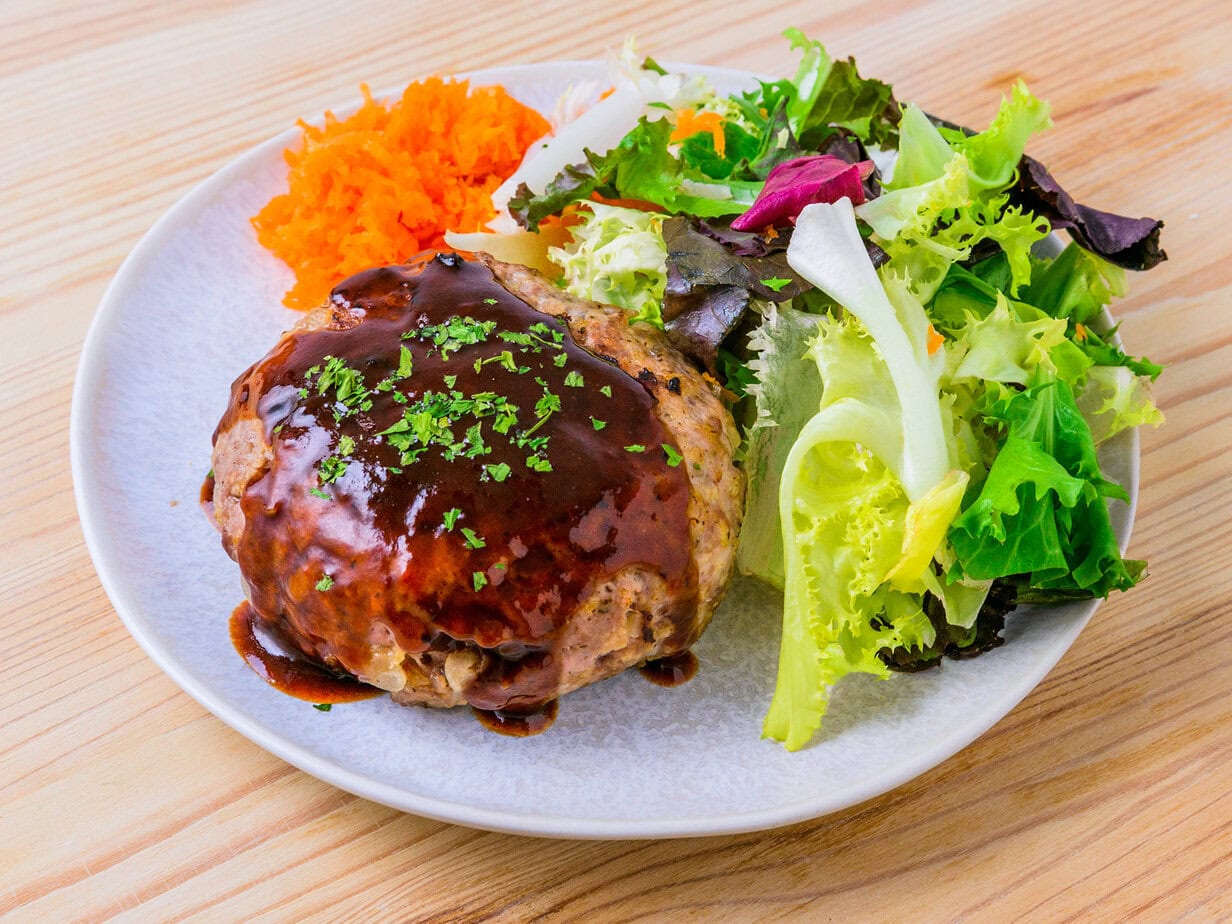
As the fleets arriving from the south and the habits of the navigators were still unknown (and long misunderstood) by the Japanese population, “Nanban” gradually became a generic term to designate anything foreign yet remarkable, even attractive, as these were the beginnings of the first commercial and cultural exchanges.
In this case, it’s a historical connection with Portugal, where it’s relatively common to dip food in a sweet and sour sauce based on vinegar. Tempura, a dish that’s half-Portuguese and half-Japanese, is also a great example of this heritage!
As for the dish itself, it’s said to have emerged in the 1950s in the city of Nabeoka (still in Miyazaki prefecture). Tartar sauce didn’t yet exist in the form we know today, but the dish remains essentially the same.
On the other hand, in Japan, Nanban also refers to dishes containing chili pepper. Some people indeed add it to the Nanban sauce, however, this is not the case in the recipe I’m presenting to you today.
The Main Ingredients of Nanban Chicken
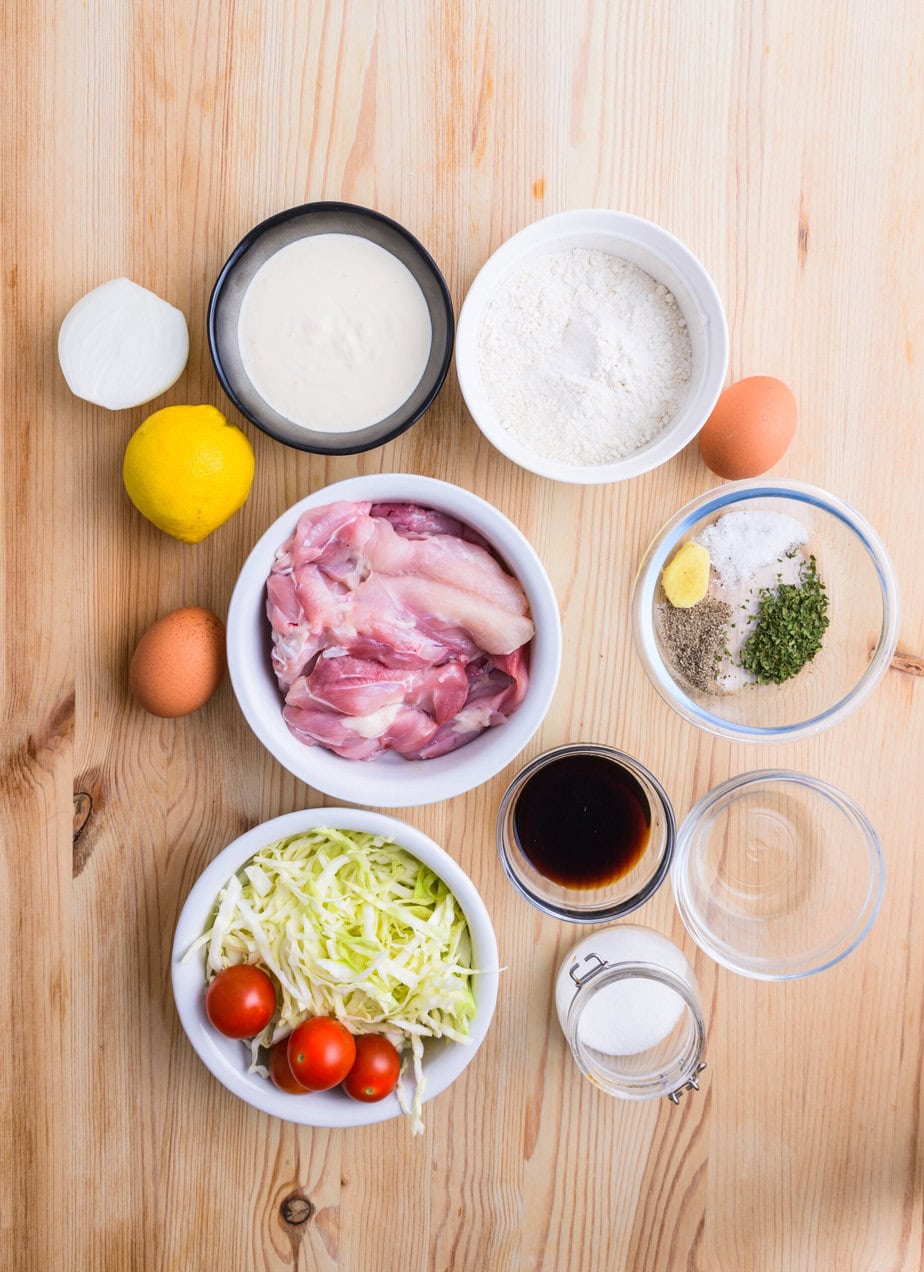
The chicken: in Nanban chicken, we usually find boneless chicken thighs. These are tender parts that are relatively easy to work with.
Rice vinegar: as the chicken is rather mild, tender, and rich from its coating, rice vinegar helps to enhance everything with subtle acidic notes. Simply put, it’s an element that balances the sweet and sour flavors of the dish.
Light soy sauce: since Nanban chicken is a sweet and sour dish, soy sauce adds a salty nuance to the equation that breaks this very polarized sweet and sour aspect. Moreover, since we only dip the chicken in Nanban sauce at the end of preparation, light soy sauce remains ideal for this kind of use.
Eggs: to be used in the preparation of tartar sauce, as you might have guessed, but also to make the chicken breading. As I mentioned, this is actually the whole difference with other fried chicken recipes. The idea is to coat the chicken with flour and then dip it in beaten egg just before frying. This way, you’ll get a thin, light crust that will also absorb the sauce and marinade well.
Tips for Successful Nanban Chicken
Many will still wonder which part of the chicken should be used for Nanban chicken. So, breast or thighs?
Personally, I prefer to go for the chicken thigh option. The breast can be drier and less flavorful while the thigh is a fattier meat that also allows for more flavors.
The only thing to say is that it may indeed be easier to pound the breast. However, in both cases, it remains a preliminary step to give the meat a uniform thickness, the effort will remain roughly the same.
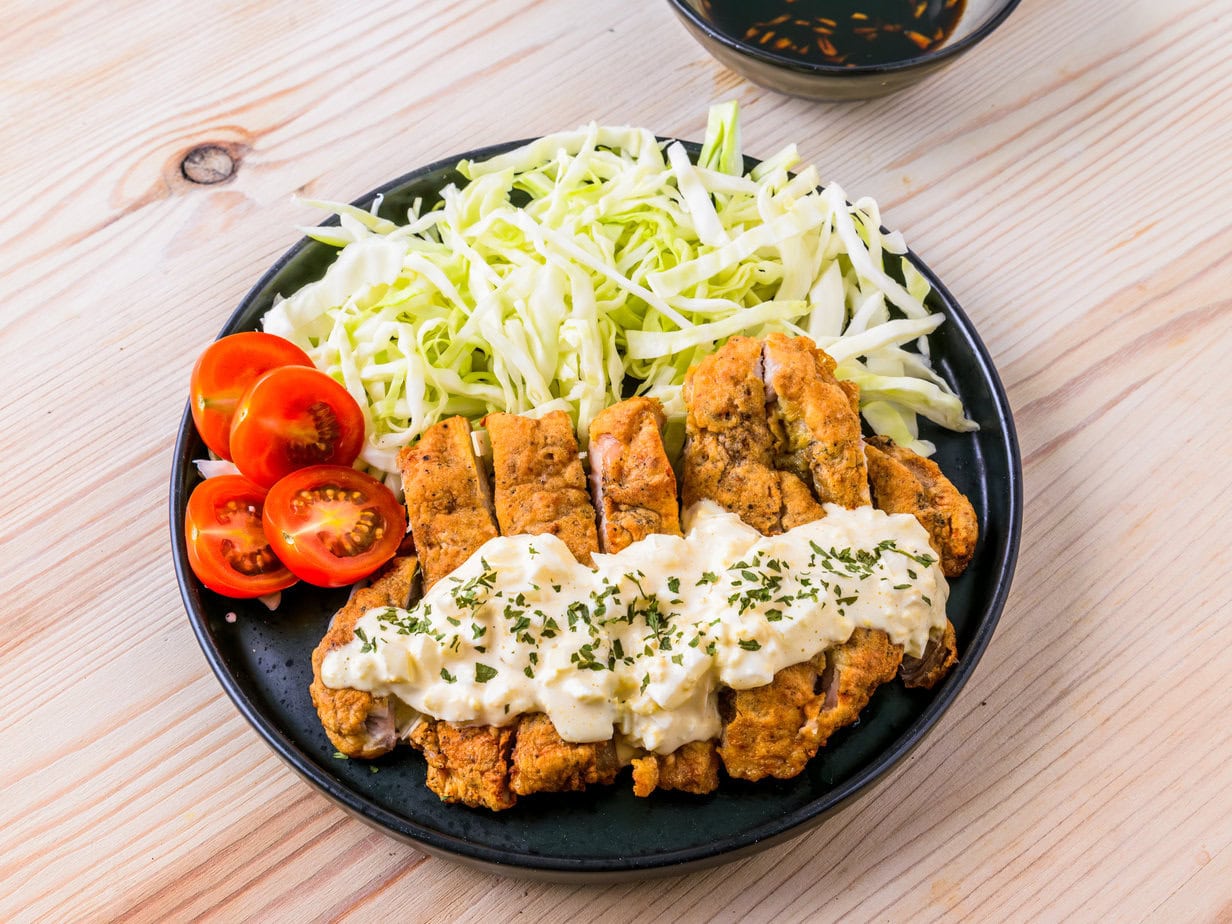
Nanban Chicken – Fried chicken with Tartar sauce
Ingredients
- 2 chicken thighs boneless
- 1 pinch salt
- 1 pinch pepper
Breading
- 4 tablespoons flour
- 1 egg beaten
- Frying oil
Nanban Sauce
- 2 tablespoons light soy sauce
- 2 tablespoons of sugar
- 1 tablespoon rice vinegar
- 0.5 teaspoon of grated ginger
Tartar sauce
- 1 hard-boiled egg
- 50 grams of onion
- 60 grams of mayonnaise
- 1 teaspoon of lemon juice
Garnish
- 20 grams of grated cabbage
- 4 cherry tomatoes
- Dried parsley
Instructions
Tartar sauce
- Finely chop the onions.50 grams of onion
- Put the hard-boiled eggs in a bowl and mash them with a fork1 hard-boiled egg
- Add the rest of the tartar sauce ingredients and mix.60 grams of mayonnaise, 1 teaspoon of lemon juice
Fried chicken
- Pound the chicken thighs to have an even thickness2 chicken thighs
- Sprinkle salt and pepper all over1 pinch salt, 1 pinch pepper
- Dust with flour and dip in beaten egg.4 tablespoons flour, 1 egg
- Pour frying oil to a height of about 3 cm from the bottom of the pan, heat to 180 ℃, add the chicken and fry on both sides for about 8 minutes (4 minutes per side), until golden and cooked through, drain the oil.Frying oil
Nanban Sauce
- Mix the nanban sauce ingredients in a small saucepan and heat over medium heat until simmering2 tablespoons light soy sauce, 2 tablespoons of sugar, 1 tablespoon rice vinegar, 0.5 teaspoon of grated ginger
- As soon as the sugar is dissolved, remove from heat
- Place the sauce in a salad bowl or tray and place and turn the fried chicken several times on top to coat it with sauce
Plating
- Arrange the chicken on a plate with the cabbage and cherry tomatoes
- Garnish with dried parsley and tartar sauce20 grams of grated cabbage, 4 cherry tomatoes, Dried parsley


